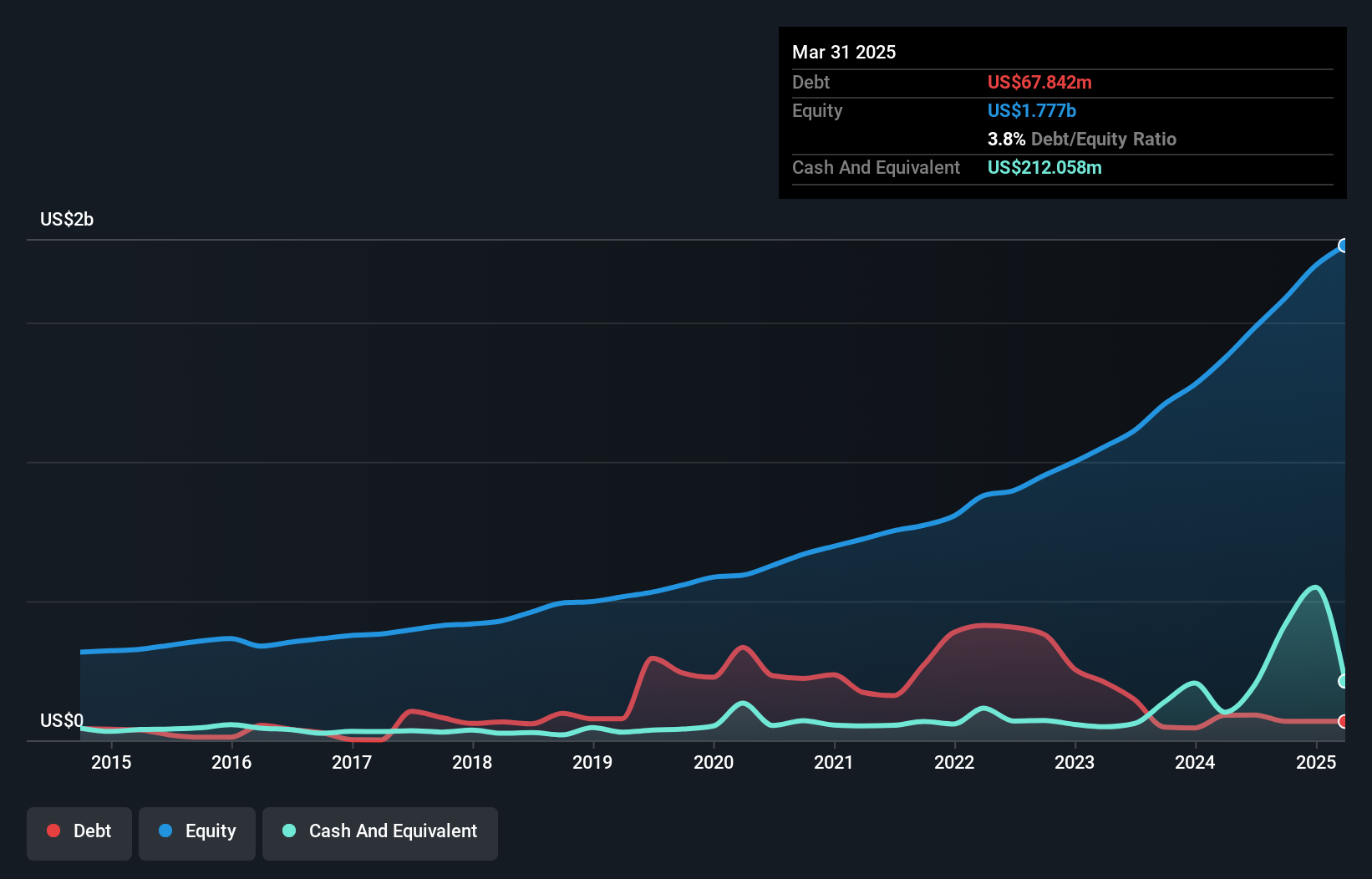Comfort Systems USA (NYSE:FIX) Has A Rock Solid Balance Sheet
Warren Buffett famously said, 'Volatility is far from synonymous with risk.' It's only natural to consider a company's balance sheet when you examine how risky it is, since debt is often involved when a business collapses. We note that Comfort Systems USA, Inc. (NYSE:FIX) does have debt on its balance sheet. But is this debt a concern to shareholders?
We've found 21 US stocks that are forecast to pay a dividend yield of over 6% next year. See the full list for free.
When Is Debt Dangerous?
Debt assists a business until the business has trouble paying it off, either with new capital or with free cash flow. If things get really bad, the lenders can take control of the business. However, a more frequent (but still costly) occurrence is where a company must issue shares at bargain-basement prices, permanently diluting shareholders, just to shore up its balance sheet. Of course, debt can be an important tool in businesses, particularly capital heavy businesses. The first thing to do when considering how much debt a business uses is to look at its cash and debt together.
How Much Debt Does Comfort Systems USA Carry?
You can click the graphic below for the historical numbers, but it shows that Comfort Systems USA had US$67.8m of debt in March 2025, down from US$89.9m, one year before. However, it does have US$212.1m in cash offsetting this, leading to net cash of US$144.2m.

How Healthy Is Comfort Systems USA's Balance Sheet?
The latest balance sheet data shows that Comfort Systems USA had liabilities of US$2.41b due within a year, and liabilities of US$381.0m falling due after that. Offsetting these obligations, it had cash of US$212.1m as well as receivables valued at US$2.28b due within 12 months. So its liabilities outweigh the sum of its cash and (near-term) receivables by US$301.3m.
This state of affairs indicates that Comfort Systems USA's balance sheet looks quite solid, as its total liabilities are just about equal to its liquid assets. So it's very unlikely that the US$18.9b company is short on cash, but still worth keeping an eye on the balance sheet. While it does have liabilities worth noting, Comfort Systems USA also has more cash than debt, so we're pretty confident it can manage its debt safely.
See our latest analysis for Comfort Systems USA
In addition to that, we're happy to report that Comfort Systems USA has boosted its EBIT by 71%, thus reducing the spectre of future debt repayments. There's no doubt that we learn most about debt from the balance sheet. But ultimately the future profitability of the business will decide if Comfort Systems USA can strengthen its balance sheet over time. So if you're focused on the future you can check out this free report showing analyst profit forecasts.
Finally, a company can only pay off debt with cold hard cash, not accounting profits. While Comfort Systems USA has net cash on its balance sheet, it's still worth taking a look at its ability to convert earnings before interest and tax (EBIT) to free cash flow, to help us understand how quickly it is building (or eroding) that cash balance. During the last three years, Comfort Systems USA generated free cash flow amounting to a very robust 87% of its EBIT, more than we'd expect. That puts it in a very strong position to pay down debt.
Summing Up
While it is always sensible to look at a company's total liabilities, it is very reassuring that Comfort Systems USA has US$144.2m in net cash. And it impressed us with free cash flow of US$506m, being 87% of its EBIT. So is Comfort Systems USA's debt a risk? It doesn't seem so to us. When analysing debt levels, the balance sheet is the obvious place to start. However, not all investment risk resides within the balance sheet - far from it. These risks can be hard to spot. Every company has them, and we've spotted 1 warning sign for Comfort Systems USA you should know about.
If, after all that, you're more interested in a fast growing company with a rock-solid balance sheet, then check out our list of net cash growth stocks without delay.
New: AI Stock Screener & Alerts
Our new AI Stock Screener scans the market every day to uncover opportunities.
• Dividend Powerhouses (3%+ Yield)• Undervalued Small Caps with Insider Buying• High growth Tech and AI CompaniesOr build your own from over 50 metrics.
Explore Now for FreeHave feedback on this article? Concerned about the content? Get in touch with us directly. Alternatively, email editorial-team (at) simplywallst.com.This article by Simply Wall St is general in nature. We provide commentary based on historical data and analyst forecasts only using an unbiased methodology and our articles are not intended to be financial advice. It does not constitute a recommendation to buy or sell any stock, and does not take account of your objectives, or your financial situation. We aim to bring you long-term focused analysis driven by fundamental data. Note that our analysis may not factor in the latest price-sensitive company announcements or qualitative material. Simply Wall St has no position in any stocks mentioned.
Disclaimer: Investing carries risk. This is not financial advice. The above content should not be regarded as an offer, recommendation, or solicitation on acquiring or disposing of any financial products, any associated discussions, comments, or posts by author or other users should not be considered as such either. It is solely for general information purpose only, which does not consider your own investment objectives, financial situations or needs. TTM assumes no responsibility or warranty for the accuracy and completeness of the information, investors should do their own research and may seek professional advice before investing.
Most Discussed
- 1
- 2
- 3
- 4
- 5
- 6
- 7
- 8
- 9
- 10